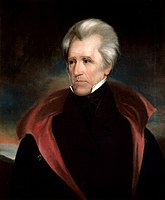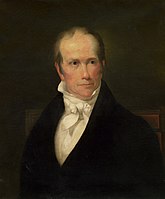| |||||||||||||||||||||||||||||
| Turnout | 84.2%[1] | ||||||||||||||||||||||||||||
|---|---|---|---|---|---|---|---|---|---|---|---|---|---|---|---|---|---|---|---|---|---|---|---|---|---|---|---|---|---|
| |||||||||||||||||||||||||||||
 County Results
| |||||||||||||||||||||||||||||
| Elections in New York State |
|---|
 |
The 1832 United States presidential election in New York took place between November 2 and December 5, 1832, as part of the 1832 United States presidential election. Voters chose 42 representatives, or electors to the electoral college, who voted for president and vice president.
Andrew Jackson was the incumbent president, seeking re-election to a second term on the Democratic Party ticket. Following the results of the previous election, the Adams Party in New York experienced a rapid decline in morale, and leadership of the Anti-Jacksonian opposition fell to the new Anti-Masonic Party. The Anti-Masons nominated former United States Attorney General William Wirt at their national convention in Baltimore in September 1831. Many were hopeful that Wirt would be selected by the National Republican Convention when it met in December, but the party instead nominated Senator Henry Clay of Kentucky. Eager to avoid a split in the Anti-Jacksonian forces, New York Anti-Masonic leaders negotiated a fusion ticket of electors nominated jointly by both parties who were pledged to support whichever candidate stood the best chance of defeating Jackson in the electoral college.[2]
On election day, Jackson defeated the fusion ticket by a margin of 4.2 percent.


